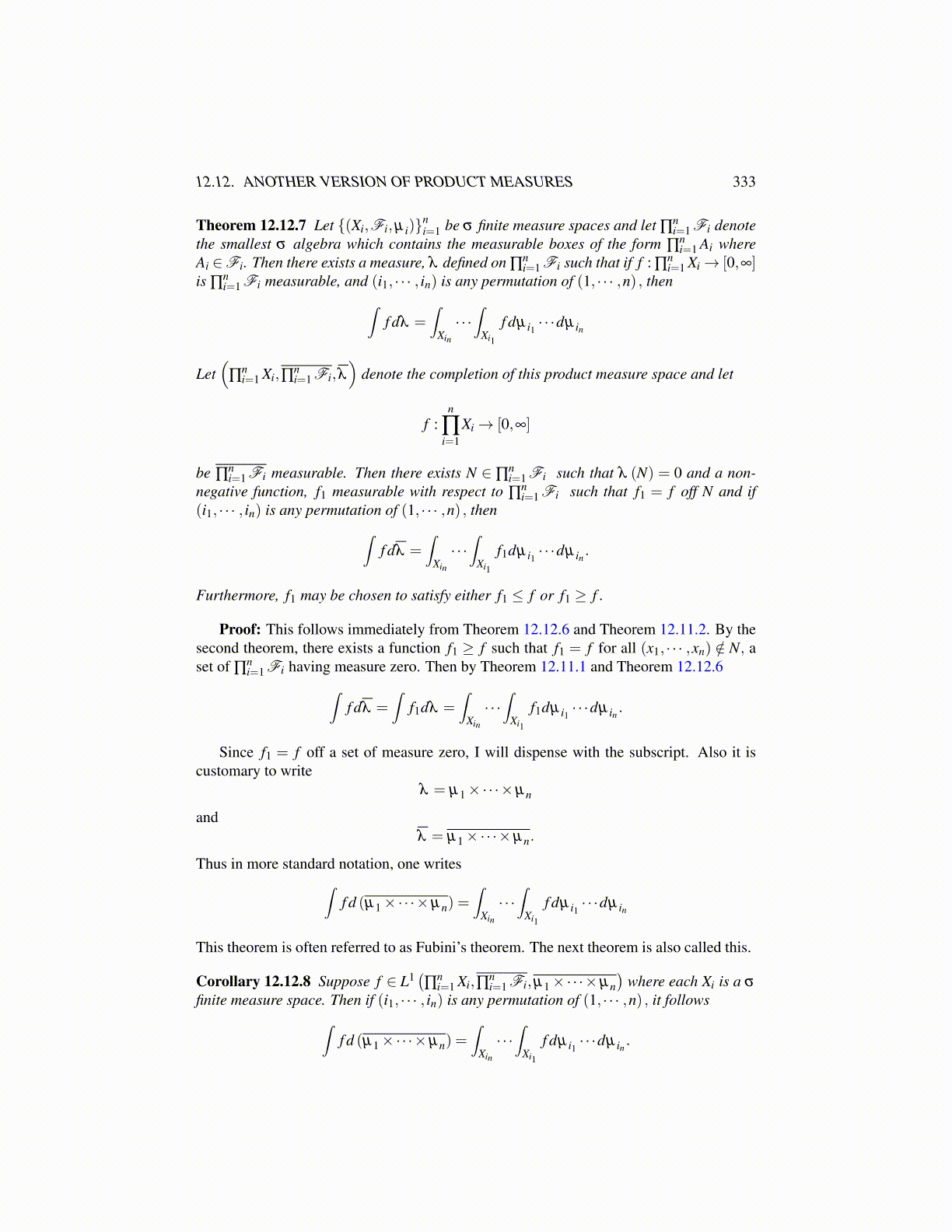
12.12. ANOTHER VERSION OF PRODUCT MEASURES 333
Theorem 12.12.7 Let {(Xi,Fi,µ i)}ni=1 be σ finite measure spaces and let ∏
ni=1 Fi denote
the smallest σ algebra which contains the measurable boxes of the form ∏ni=1 Ai where
Ai ∈Fi. Then there exists a measure, λ defined on ∏ni=1 Fi such that if f : ∏
ni=1 Xi→ [0,∞]
is ∏ni=1 Fi measurable, and (i1, · · · , in) is any permutation of (1, · · · ,n) , then∫
f dλ =∫
Xin
· · ·∫
Xi1
f dµ i1 · · ·dµ in
Let(
∏ni=1 Xi,∏
ni=1 Fi,λ
)denote the completion of this product measure space and let
f :n
∏i=1
Xi→ [0,∞]
be ∏ni=1 Fi measurable. Then there exists N ∈ ∏
ni=1 Fi such that λ (N) = 0 and a non-
negative function, f1 measurable with respect to ∏ni=1 Fi such that f1 = f off N and if
(i1, · · · , in) is any permutation of (1, · · · ,n) , then∫f dλ =
∫Xin
· · ·∫
Xi1
f1dµ i1 · · ·dµ in .
Furthermore, f1 may be chosen to satisfy either f1 ≤ f or f1 ≥ f .
Proof: This follows immediately from Theorem 12.12.6 and Theorem 12.11.2. By thesecond theorem, there exists a function f1 ≥ f such that f1 = f for all (x1, · · · ,xn) /∈ N, aset of ∏
ni=1 Fi having measure zero. Then by Theorem 12.11.1 and Theorem 12.12.6∫
f dλ =∫
f1dλ =∫
Xin
· · ·∫
Xi1
f1dµ i1 · · ·dµ in .
Since f1 = f off a set of measure zero, I will dispense with the subscript. Also it iscustomary to write
λ = µ1×·· ·×µn
andλ = µ1×·· ·×µn.
Thus in more standard notation, one writes∫f d (µ1×·· ·×µn) =
∫Xin
· · ·∫
Xi1
f dµ i1 · · ·dµ in
This theorem is often referred to as Fubini’s theorem. The next theorem is also called this.
Corollary 12.12.8 Suppose f ∈ L1(∏
ni=1 Xi,∏
ni=1 Fi,µ1×·· ·×µn
)where each Xi is a σ
finite measure space. Then if (i1, · · · , in) is any permutation of (1, · · · ,n) , it follows∫f d (µ1×·· ·×µn) =
∫Xin
· · ·∫
Xi1
f dµ i1 · · ·dµ in .